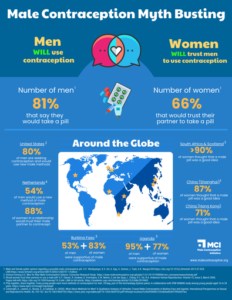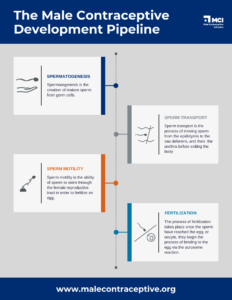Q: From your perspective, what is needed to move innovative new male contraceptive methods into practice, and for them to get taken up widely among men?
A: Fifty percent of the global population is male; we know a wider set of options is needed. Even so, people keep saying they want proof that there’s a market for male contraceptives. We did a consumer research study that found an estimated 17 million men are looking for more contraceptive options in the United States. And, a new study in The Netherlands showed the majority of young adults believe there should be more contraceptives for men.
Another public perception to overcome is that men won’t use them, and women won’t trust them to use them. We have to get past that dismissive attitude. Research has shown the unmet need for contraception among women in general; so, providing men with more options will help meet women’s needs, too.

MCI Infographic: Male Contraception Mythbusting
Advocacy and outreach are key, as well. When I mention male contraceptives to people in passing, I often get a response “oh, I never heard about that, really?” Promotion is important to get people past the “oh” moment—get information out early so people become aware of and support methods in development. We engage youth in our work as interns and through our youth advisory board. They inform their peers, and the circle of awareness expands.
Advocacy and outreach are the heart of MCI. We promote products being developed so more people are aware of the possibilities or that support is needed.









